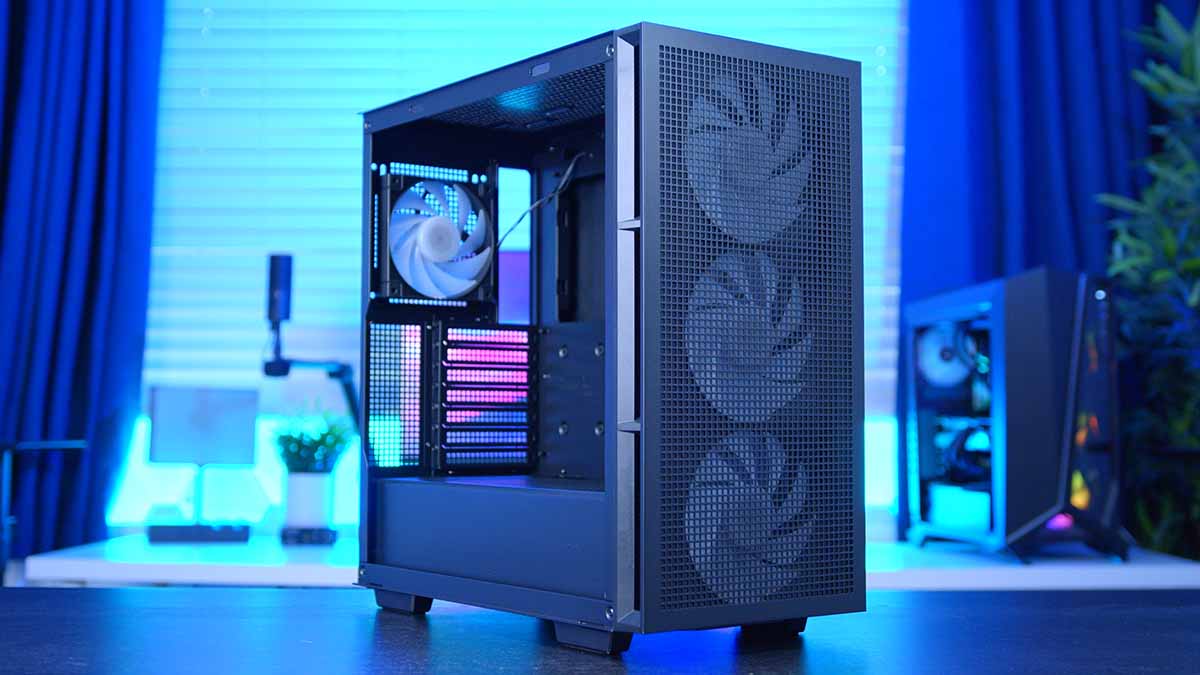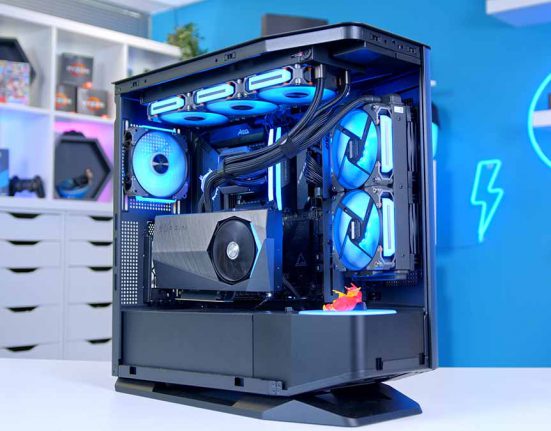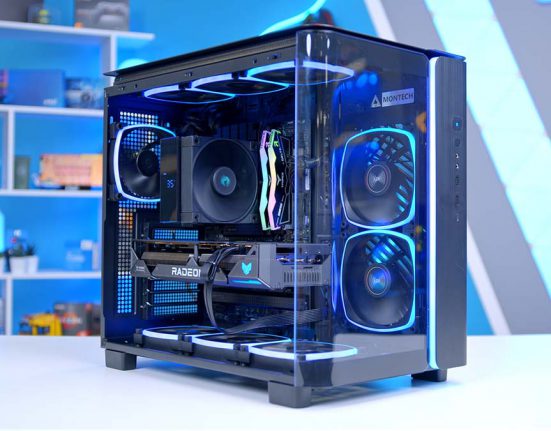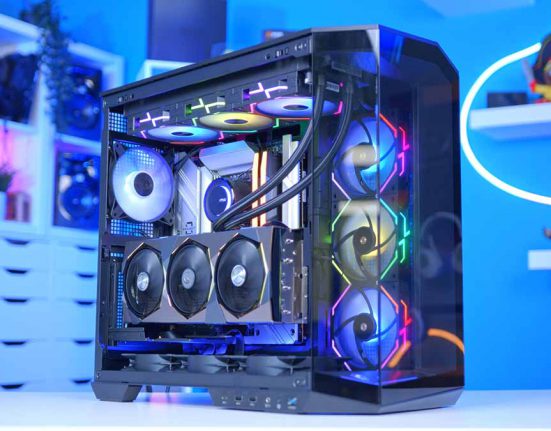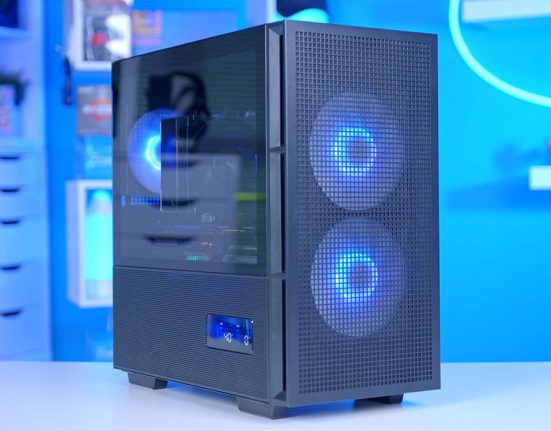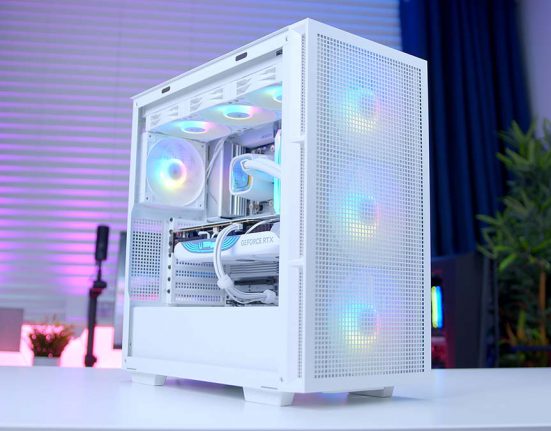Introduction
Airflow and mesh-focused PC cases have been the big focus of the case market for the past couple of years. We’ve seen a myriad of manufacturers throw their hat into the ring, providing consumers with a myriad of cases to choose from that all prioritise thermal capability. Deepcool is one of these manufacturers, offering up a range of new chassis catering towards budget PC builds, while still maintaining a solid set of features.
In todays review we’ll be doing a deep dive on one of these new cases, the CH560.
This chassis sports a familiar aesthetic to some of Deepcool’s earlier cases, but takes a hybrid approach to airflow. This review highlights the strengths and weaknesses of this case, while analysing the various features and design aspects.
Buy the Deepcool CH560 on:
Mesh vs Tempered Glass
While mesh cases have started to take the limelight in recent years, they haven’t been the norm since PC building has gained popularity. Tempered glass cases have been a mainstay in this market for quite some time, with many manufacturers still releasing cases that have a tempered glass front and side panels. But one important question still remains, which is better, mesh or glass? If we look at this from a performance standpoint, the obvious choice is mesh. Mesh cases open up the front to maximise airflow, increasing the surface area of the case that has ventilation. Doing this will result in a noticeable increase in thermal capability.
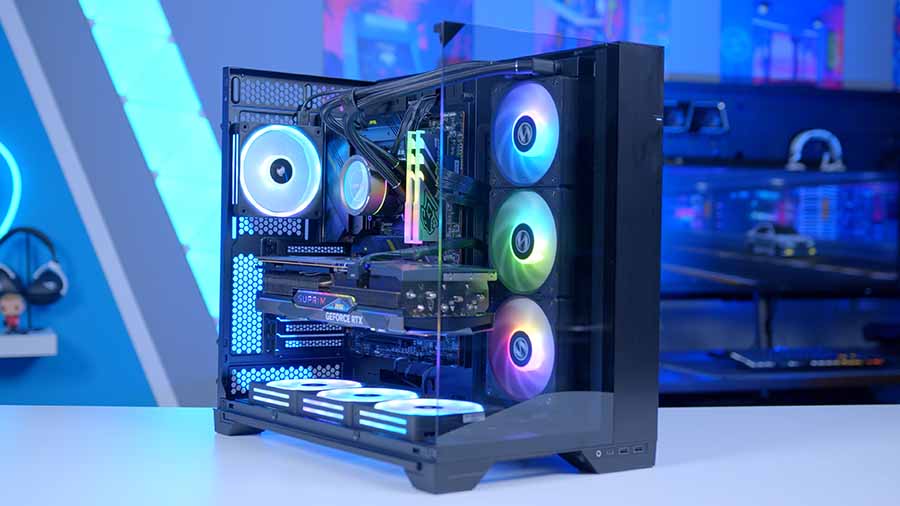
But there are some downsides to picking up a mesh case, and these are dust, and aesthetic. Although aesthetic and design is arguably the smaller caveat of the two, your case acting as a bit of a dust magnet can be a problem. You may have to clean out a mesh case more often to ensure that you don’t run into ventilation issues. On the other side, glass cases tend to struggle a bit more when it comes to airflow. But this isn’t always ‘the case’, as there are a number of popular chassis (such as the Corsair 4000X) that sport a glass front panel, but still hold up very well in terms of thermals.
Tempered glass panels often look comparably better to mesh as well. While we could argue that mesh cases are better, ultimately the type of case that you choose is entirely down to preference and use-case. If you’re prioritising thermals, we’d recommend picking up a mesh case. However, there are a mass of cases that utilise tempered glass, that have ventilation in the right places, making them a worthwhile pickup for a PC build.
Suggested Article: Best $1200 Gaming PC Build 2023
Deepcool CH560 Design & Aesthetic
Moving onto the design of the CH560, my initial thoughts were that this case bears a familiar look to a couple of Deepcool’s previous chassis. The CH560 is quite similar to the CK560, but with an altered side and front panel look. The CK560 was a pretty good looking case, so I’m not surprised that Deepcool have taken inspiration from one of their older but popular options. The front panel of the CH560 is fully perforated, providing a relatively unrestricted view of the three pre-installed 140mm RGB fans. Along with adding to the overall aesthetic of the case, the mesh front panel will help air flow more freely throughout.
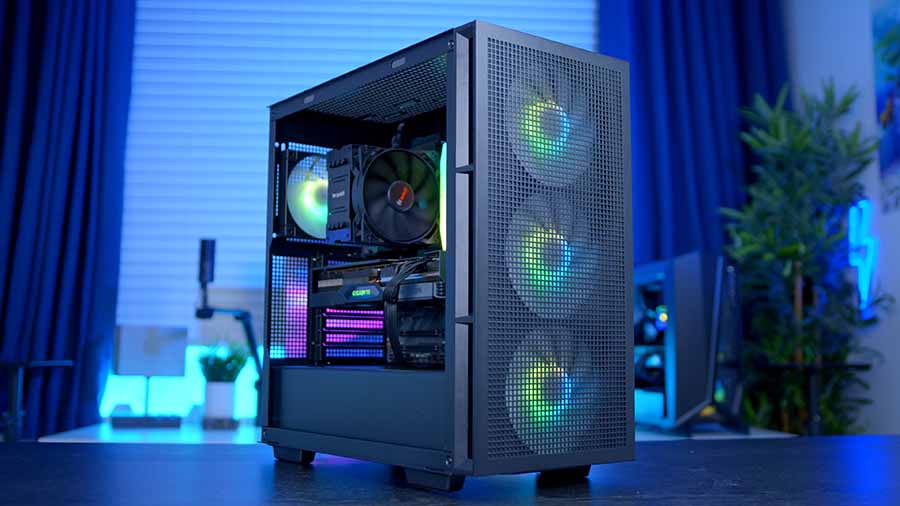
Moving around to the side of the CH560, the most important design aspect to note here is the hybrid tempered glass and perforated side panel. The top half of the side panel is glass, while the lower third is perforated. We’ll delve into this a bit more in the features section, but this unique design approach brings the best of both worlds, offering a window into your build, and another way to ventilate the case. Otherwise, there isn’t much to talk about when it comes to the design of the case. The CH560 isn’t the most impressive chassis when it comes to aesthetic, similarly to the CK560.
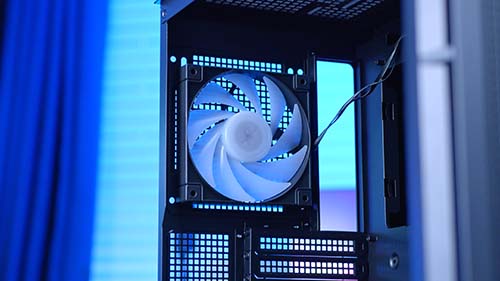

There’s a bigger focus on features with this particular case, which might be why the design is a little bit lacklustre. However, I think the CH560 is perfectly fine. It isn’t the most exciting chassis, but the black colouring across the entire case is consistent, and will blend in very well with other components. The RGB fans are a nice touch on this case, and this will save consumers some money, as four fans should be ample for most systems.
Features We Like
In this section we’ll be taking a look at the main features of the Deepcool CH560. We’ll be discussing each one highlighting the ones that we’re a fan of, and the ones that we think could do with some improvement.
Sports a Mesh Front Panel
Cases with mesh panels tend to offer better ventilation and airflow for your components, allowing air to flow freely throughout the case. The CH560 offers a mesh front and side panel which might attract a little bit more dust, but the increase in airflow is well worth it. Its great to see Deepcool embracing the mesh design, especially on this budget focused case.
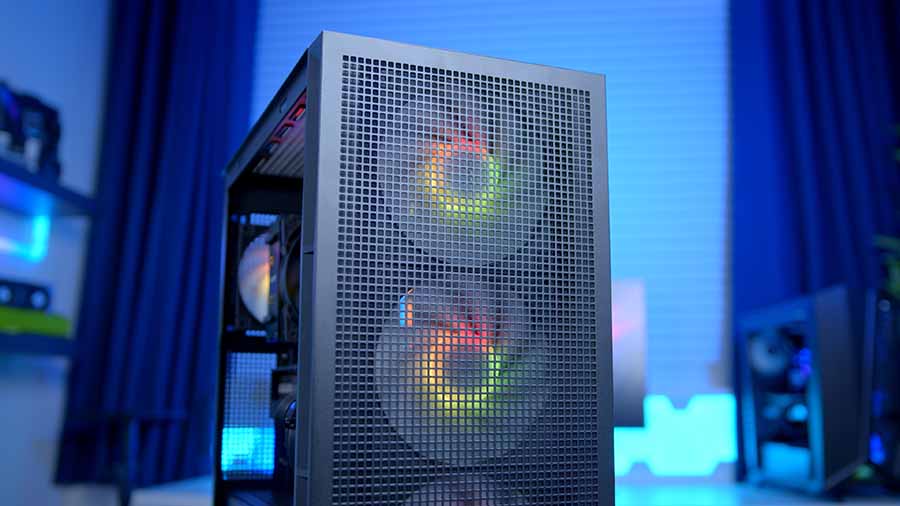
Comes with Four Pre-Installed Fans
We’ve seen a number of cases release within the past couple of years that provide a focus on airflow, but simply don’t have enough fans. It feels counterintuitive to say this is the focus, but only provide one or two fans. However, Deepcool haven’t fallen into this trap, and have provided a whopping four preinstalled fans. At the front of the chassis, there are three 140mm RGB fans, and there is a 120mm RGB fan at the rear. This will save consumers some money, as four fans is going to be more than enough for most consumers. All of the RGB lighting can be fully customised and controlled using a variety of software too.

Plenty of Space for a Modern Build
The CH560 is pretty robust, and offers a decent amount of internal space for a variety of component configurations. In terms of GPU and CPU cooler clearance, you’ve got 380mm, and 175mm respectively to play around with. We would prefer to have a bit more space for our graphics card, but 380mm should be more than enough for most builds. However, you may have to top mount your CPU cooler
Speaking of cooling, consumers also have a mass of space for a range of radiators and fans. The CH560 can support 9 fans across the entirety of the chassis, and offers space for 360mm radiators at the top and front.
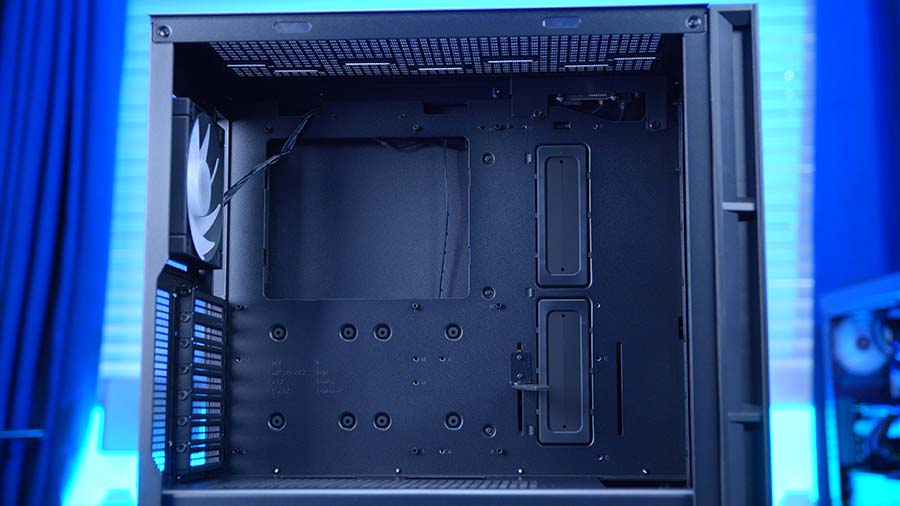
Offers a Side Panel Security Screw
The side panel of the CH560 is a rudimentary ‘slide on’ design, which is relatively secure. However, Deepcool have ensured that your side panel will stay flush in your case, by providing a security screw. Although this isn’t necessary, it is nice to see that extra level of security making sure that the side panel does stay on.
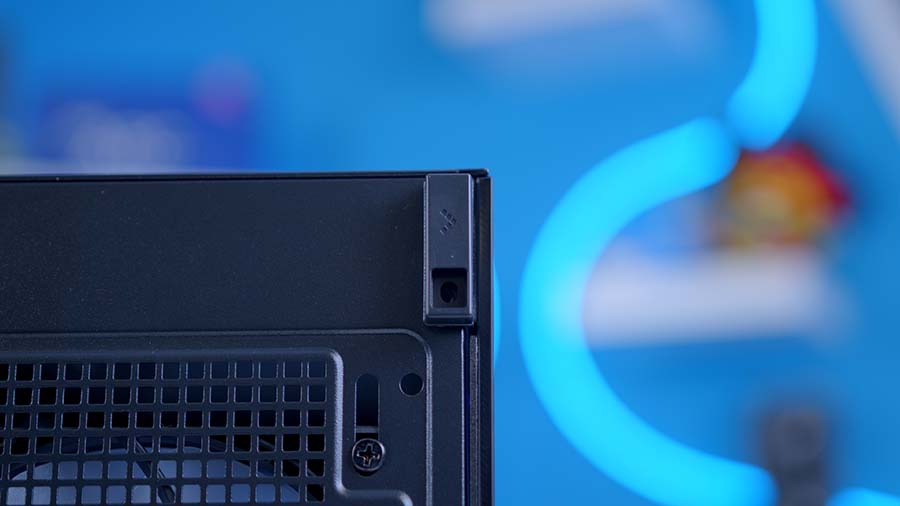
Features We Don’t Like
Side Panel Ventilation
While I do like what Deepcool have done with the side panel of this case, I feel the execution is a bit lacklustre. The ventilated side panel does provide more way for air to flow out, but there’s not really a way for air to be pushed out of the chassis. Because you can’t mount fans here, there’s no method for exhausting air, so the air flowing out of your case isn’t likely to be channelled in this direction.
We could argue that the perforations will allow the case to breathe, and while this might be true, if most traditional cases without the hybrid glass and ventilated panel can cope, this case should be able too as well. I feel that the side panel would have been better off being fully glass, instead of the hybrid design, as it doesn’t seem to be doing a lot when it comes to airflow.
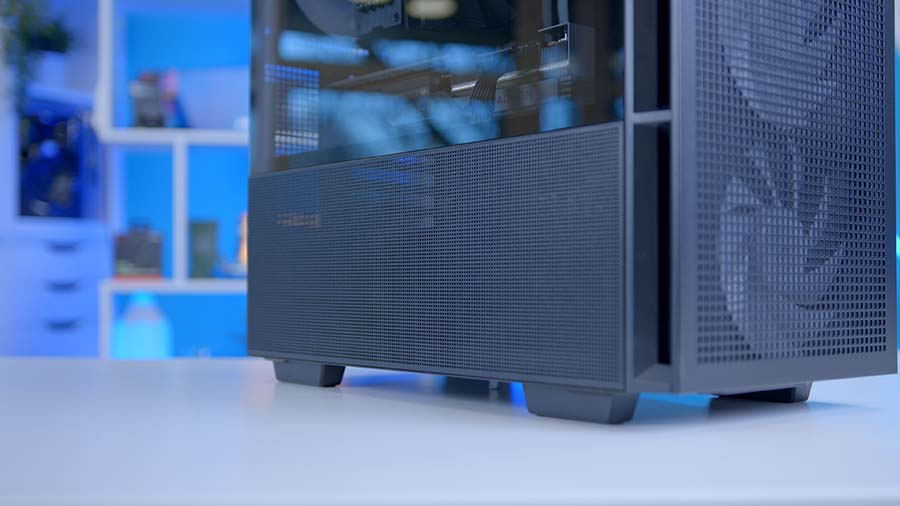
GPU Bracket is Quite Flimsy
The inclusion of an internal GPU bracket is quite useful, but we found it to be rather flimsy versus other options. The bracket has some movement up and down, to cater to different sizes, but it is quite small, which may result in some extra sag. If you’ve got a smaller graphics card, the bracket should be able to cope. But for bigger cards, we’d recommend using the bracket that came with your card.
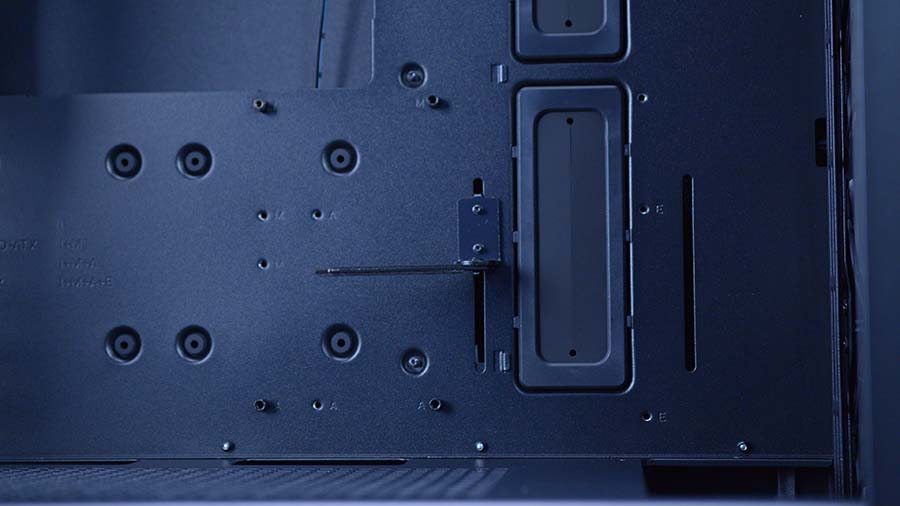
Conclusion
Deepcool CH560
Product Name: CH560
Brand: Deepcool
-
Features
-
Design
-
Versatility
-
Value For Money
Summary
Deepcool’s CH560 is a well-rounded case that has an interesting method of maximising airflow, but doesn’t quite deliver on the execution of said method. I think for the most part, the CH560 is solid. It comes in at a price point that I can’t really argue with, it is robust, easy to build in, supports a plethora of different components, and does seem to prioritise airflow out of the gate. The four pre-installed fans will save consumers money, but it also aids airflow and thermal capability. And with the way the case has been built, you’ve got plenty of room for more radiators and fans if you need them.
My only issue is the hybrid side panel. While I don’t think it takes much away from the CH560 besides weakening the aesthetic to a degree, it definitely doesn’t add much either. Because you can’t mount any fans on this panel, the air being moved around the case isn’t being directed out of this ventilation. And because the four pre-installed fans utilise a traditional push/pull configuration, I can’t see much air being pushed out of the perforations on the side at all. For this reason, it seems kind of pointless. While I do think it will allow the case to breathe a little bit more, especially if you’ve built a tighter system with less room, this side panel doesn’t do a lot. Regardless of the issues I have with the side panel, the CH560 is an excellent case, that many consumers will be attracted to, especially at the budget side of the market.
Pros
✅ Comes in at a solid price point.
✅ Plenty of space for an array of components.
✅ Comes with four pre-installed fans.
Cons
❌ Hybrid side panel doesn’t do much.
❌ GPU bracket is quite weak.
❌ Is aesthetically boring.


